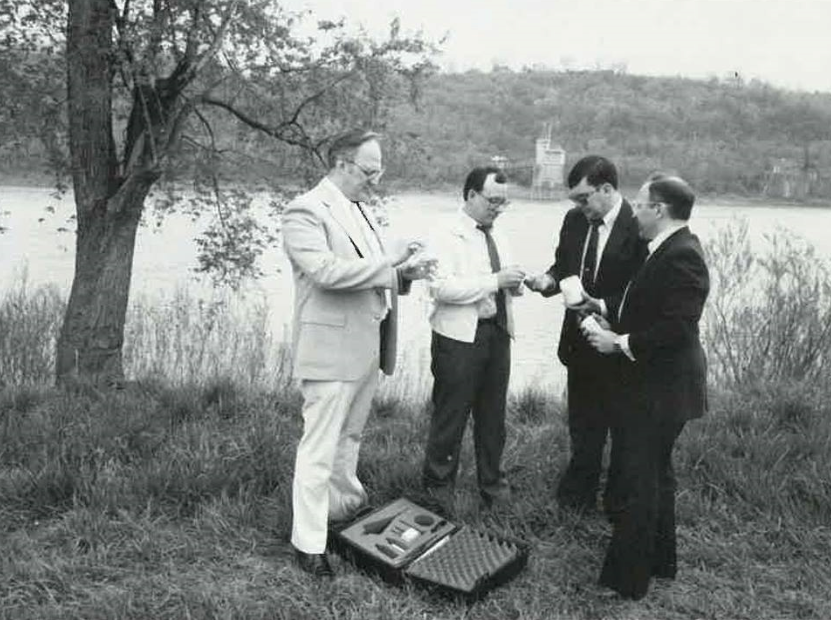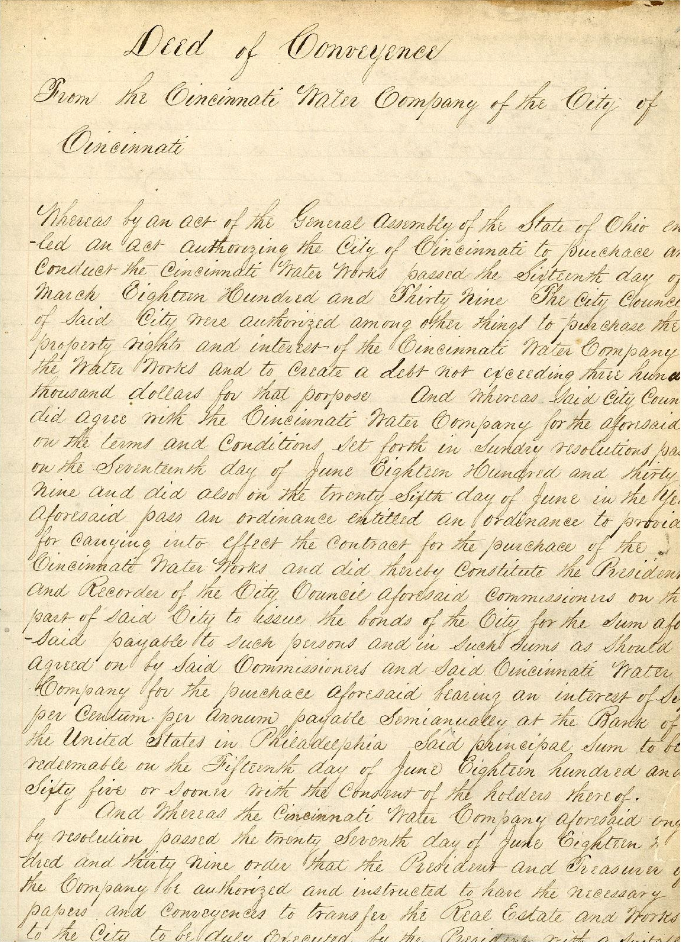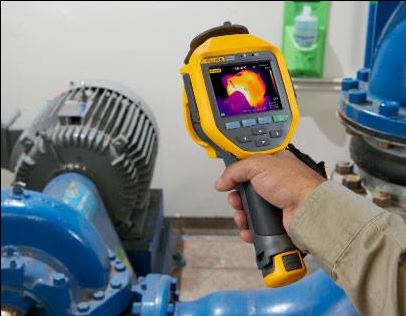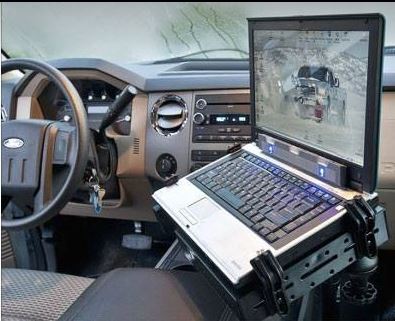GCWW History (Page 3)
In honor of our 200th anniversary in March of 2017, GCWW posted throughout the year information about its unique past on social media. The series was entitled "Splash from the Past" and has been replicated here for your enjoyment.

Quick links:
| Post 49 (5-11-17) |
Post 50 (5-18-17) |
Post 51 (5-25-17) |
Post 52 (6-1-17) |
Post 53 (6-8-17) |
Post 54 (6-15-17) |
Post 55 (6-22-17) |
Post 56 (6-29-17) |
Post 57 (7-6-17) |
Post 58 (7-13-17) |
|---|---|---|---|---|---|---|---|---|---|
| Post 59 (7-20-17) |
Post 60 (7-27-17) |
Post 61 (8-3-17) |
Post 62 (8-10-17) |
Post 63 (8-17-17) |
Post 64 (8-24-17) |
Post 65 (8-31-17) |
Post 66 (9-07-17) |
Post 67 (9-14-17) |
Post 68 (9-21-17) |
| Post 69 (9-28-17) |
Post 70 (10-5-17) |
Post 71 (10-12-17) |
Post 72 (10-19-17) |
Post 73 (10-26-17) |
Post 74 (11-2-17) |
Post 75 (11-9-17) |
Post 76 <(11-16-17) |
Post 77 (11-23-17) |
Post 78 (11-30-17) |
| Post 79 (12-07-17) |
Post 80 (12-14-17) |
Post 81 (12-21-17) |
Post 82 (12-28-17) |
Post 83 (01-11-18) |
Post 84 (01-18-18) |
Post 85 (01-25-18) |
Post 86 (02-1-18) |
Post 87 (02-8-18) |
Post 88 (02-15-18) |
| Post 89 (02-22-18) |
Go to Historical Posts (Page 1)
Go to Historical Posts (Page 2)
Post 49
Water Quality Act
In 1965, Congress adopted Legislation known as the Water Quality Act, which directed the states to develop water quality standards. This federally-directed initiative was deemed necessary since many watersheds and waterways crossed state boundaries.
By the early 1970s, water quality standards were developed and enacted by all the states. Since then, revisions have occurred to reflect changing scientific information and new testing... procedures.
Photo: Bill Roberts illustrated his famous cartoon in this time period, because the Cuyahoga River caught on fire from pollution in 1969, which clearly demonstrated the need for federal regulations.

Post 50
1969
In 1969, Cincinnati Water Works (CWW) discontinued the ammonia feed in the treatment process. Ammonia had previously been fed into the water system (since 1931) to prevent the formation of strong taste and odor compounds. It was later discovered, however, that if slightly higher levels of chlorine were used, the compounds were destroyed, thus, the addition of ammonia was no longer needed.
Photo: CWW ammoniator from the 1930s

Post 51
1970's
The decade of the 1970s was a pivotal time for Cincinnati Water Works (CWW). As technology advanced, and the City grew, CWW continued to keep up with new developments and regulations.
1970
The United States Environmental Protection Agency (USEPA) was created under an Executive Order from President Nixon. Since its inception, the USEPA has been working for a cleaner, healthier environment for the American people.
Photo: President Nixon and Warren Burger at William Ruckelshaus's (the first USEPA Administrator) swear-in on Dec. 4, 1970. Photograph, NARA.
1970
Ohio Legislature passed a law requiring fluoridation of the water supply for water systems serving more than 5000 people.
Photo: Fluoride equipment at the California Plant and was in full operation by 1978.
1971
-
The Eden Park Water Tower was designated as the 12th American Water Landmark by the American Water Works Association. (see photo)
-
Cincinnati’s City Council passed an ordinance requiring backflow protection of the water system.
-
A centralized pump control was developed and installation began, at the Tennyson Pump Station. (Completed in 1977)
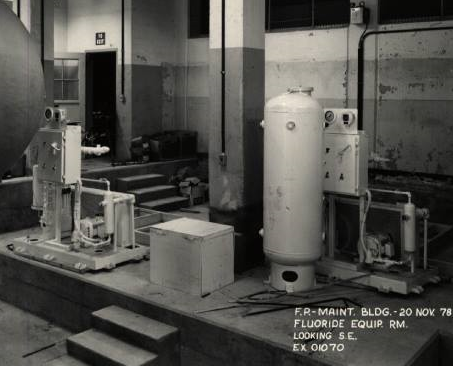
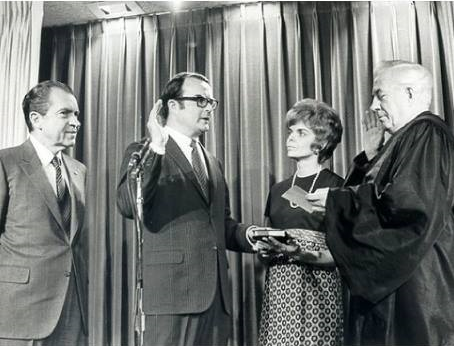
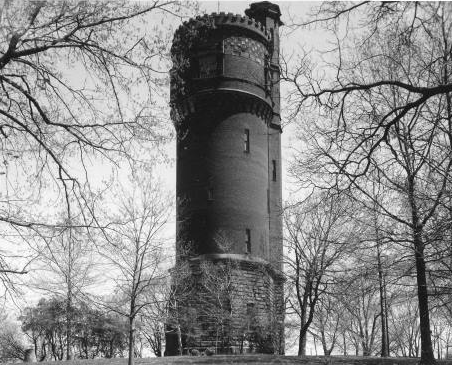
Post 52
1970's Continued
Two very important Federal Regulations for water went into effect at this time:
In 1972, the Clean Water Act was passed. The act aimed to "restore and maintain the chemical, physical, and biological integrity of the nation's waters."
In 1974, the Safe Drinking Water Act was signed into law by President Gerald Ford. This gave the federal government authority to develop, implement, and enforce drinking water regulations for public water systems throughout the U.S.
The Clean Water Act was slightly modified in 1977 by a series of amendments, which expanded the Environmental Protection Agency (EPA) mandates. These new EPA directives encompassed the release of toxic compounds into sewers and surface waters, thus, giving the EPA the legislative authority to regulate runoff.
Photo: President Gerald Ford signing the Safe Drinking Water Act.

Post 53
1976
In February 1976, the Ohio River Plant was flooded, and the raw-water pumping station was temporarily shut down. However, Cincinnati Water Works was prepared! The Old River Station was capable of pumping 70 million-gallons-per-day, and the Settling Reservoirs were full. The combination of the Old River Station plus the Settling Reservoirs supplied enough water for the subsequent five days, and allowed enough time for repairs to be ...made, without endangering the water supply.
The photo features the Ohio River Plant.
Post 54
1976 Continued
In September 1976, the Great Miami Plant was completed and water was able to be delivered through the Greenhills Feeder to the Western Hills System for the first time. The new plant was dedicated on October 21, 1976 and renamed the Charles M. Bolton Plant.
The photo features the Bolton Plant.
Post 55
1976 Continued (It was a busy year!)
In 1976, Cincinnati Water Works (CWW) began working with the USEPA to apply for a research project grant to study the use of Granular Activated Carbon (GAC) in the water treatment process for the removal of organic compounds. In keeping up with science and technology, CWW knew this was an important treatment that would benefit Cincinnati.
Then, in February 1977, a 70-ton spill of carbon tetrachloride, a known carcinogen, occurred i...n the Kanawha River -- a major tributary of the Ohio River. This event demonstrated the potential hazards and vulnerabilities presented by industrial waterways like the Ohio River. Ultimately, the spill was also a catalyst for serious consideration of the joint USEPA/CWW study to determine the feasibility of using GAC absorption as a barrier to organic contamination.
Later that year, CWW was accepted and entered into the USEPA Grant Study on the GAC Treatment. This joint study identified utility-scale GAC as the best available technology for the removal of organic contaminates, and eventually led to the design of the CWW GAC facility.
The photo features the Kanawha River in West Virginia.
Post 56
1978
In 1978, a major reorganization took place in the Cincinnati Water Works, and the Water Quality & Research, and Engineering Divisions were formed. By 1979 the Water Quality & Research Laboratory expansion was also completed.
The photo features the construction of the Research Laboratory expansion....
Post 57
1981
In 1981, Cincinnati Water Works (CWW) submitted the final report for the USEPA Granular Activated Carbon (GAC) Grant. By 1982, CWW received authorization to proceed with the design of the GAC Treatment facility; and selected Malcolm Pirnie in 1983 (a consultant agency) to design the facility and update the treatment complex.
The photo features granular activated carbon.
Post 58
1983
In 1979, work began on the Pretreatment Sedimentation Disposal Facility (Lamella Process); and by 1983, the facility was placed into service. It was installed in front of the large brick-lined sedimentation reservoirs which were constructed as part of the “New Works” in the early 1900’s. Enhancing the Lamella Process involves passing water through a series of plates placed on an angle allowing larger sediments to fall out of the water and ...onto the plates.
This dual-sedimentation process improved the physical removal of solids and waterborne illness agents such as bacteria and protozoa (Giardia) from the Ohio River. It also provided an additional contamination barrier and helped ensure compliance with the Surface Water Treatment Rule, which was established several years later.
The graphic is a representation of the Lamella Process.
Post 59
Oil Spill
In January 1988, the largest oil spill on inland waters occurred near Pittsburgh. During this emergency, all Cincinnati Water Works (CWW) Divisions assisted in the response effort. Employees, who were normally involved with accounting, personnel and computer functions, spent a week during this spill at locations 50 to 100 miles upriver collecting water samples and performing routine analysis.
The photo shows CWW Administrative Division employees along the Ohio River with analytical equipment.
(From left: Don Winterhalter; Tim White; Don Houchins; Tom Ertel)
Post 60
Surface Water Treatment Rule
On June 29, 1989, the Surface Water Treatment Rule went into effect. The rule was established to prevent waterborne diseases caused by pathogens and viruses, such as Legionella and Giardia Lamblia. These disease-causing microbes are present at varying concentrations in most surface waters. The rule requires that water systems filter and disinfect surface water sources, to reduce the occurrence of unsafe levels of these microbes.
The photos are microscopic images of Legionella and Giardia Lamblia.
Post 61
Original Water Works Charter
Cincinnati Water Works (CWW) was bought privately by the Cincinnati Water Company in 1817 (thus, our 200-Year Celebration is THIS year!); then purchased publicly by the city 22 years later, in 1839, so CWW celebrated 150 years of publicly-owned water service in 1989. By this time, CWW had grown to include the entire City of Cincinnati, 90% of Hamilton County, ...and three additional service areas in Butler and Warren Counties. At this time, CWW supplied almost 47 billion gallons of water a year through 2,610 miles of main to over 210,000 residential and commercial accounts representing more than 800,000 consumers in the greater Cincinnati area.
The photo features the original charter, hand-written in 1839.
Post 62
CAGIS
Representatives from Cincinnati Water Works (CWW), other City and County departments, Cincinnati Bell, and the Cincinnati Gas & Electric Company cooperated in a joint-effort to pursue and develop a computerized-base-mapping system for Hamilton County, called the Cincinnati Area Geographic Information System (CAGIS) in 1989. Upon its completion, the participants were able to use digital maps for various facility management applications.
CAGIS is still in use today: http://cagismaps.hamilton-co.org/cagisportal
Post 63
1990 AWWA Conference
In June of 1990, Cincinnati Water Works (CWW) hosted the Annual Conference and Exposition of the American Water Works Association (AWWA). Cincinnati had not hosted the event since 1935. This event brought 9,873 visitors to Cincinnati, including 140 international visitors from 36 different countries. Established in 1881 by 22 people, the AWWA grew to over 52,000 members from around the world in 1990, and is currently the oldest and ...largest organization of water professionals in the world.
Learn more about the AWWA: https://www.awwa.org/
Post 64
Water Works Museum
In 1990, Cincinnati Water Works (CWW) constructed the Museum at the Filter Plant building. The Museum displays one of the finest collections of artifacts and photography depicting the evolution of a municipal water utility. Today, you can visit the museum by signing up for a Water Works Museum and Treatment Process Tour.
Tours are available every Thursday through December 21, 9:30 am - 11:30 am.
During the tour, you will:
- Visit the GCWW Water History Museum, which details the progression of water quality and supply for 200 years.
- Learn how water from the Ohio River becomes safe drinking water.
- See many steps within the treatment process, and how GCWW cleans the water through a combination of sand filtration, Granular Activated Carbon (GAC), and Ultraviolet Disinfection (UV).
- See state-of-the art laboratory facilities, where daily testing ensures the safety of drinking water.
- Learn how water is supplied and delivered to throughout the region.
To sign up for tours and for information about the GCWW H200 Celebration, please visit: H200.myGCWW.org
The photos feature the CWW Supply Division employees who helped create the museum and a photo of a museum display.
Post 65
H2O to Go Booth
In 1991, the Cincinnati Water Works (CWW) rededicated itself to customer service. The “H20 to Go” booth became one of the most visible displays of that commitment. The idea for the booth was created by two Commercial Division employees, but was quickly embraced by the entire department. The booth offers free water at public events and satisfies the thirst of thousands of grateful customers.
Still today, the H20 to Go booth is present at events such as the Taste of Cincinnati, The Flying Pig Marathon, Juneteenth, Paddlefest, and more; and provides free water to attendees.
Post 66
Richard Miller
Richard Miller’s career with Cincinnati Water Works (CWW) began in 1949, and he was the Director from 1976 until 1992. Throughout his career, Miller distinguished himself as an effective leader, and his ability was recognized throughout the industry. He received numerous awards and was elected as president of the American Water Works Association (AWWA), serving in 1985 and 1986.
Director Miller gained local and national acclaim through steadfast dedication to providing customers with high-quality drinking water. As a capstone to his career and legacy to the community, he successfully directed the research, finance, design, and construction efforts resulting in the world-renowned Granular Activated Carbon (GAC) Treatment Facility. In commemoration of his career, the water treatment complex was named in his honor.
The photo features Richard Miller in the Filter Gallery.
Post 67
GAC
Construction of the Granular Activated Carbon (GAC) facility began in 1989 and became operational in 1992.
After going through the settling and sand filtration processes, water at the Richard Miller Treatment Plant is filtered through beds of GAC. Millions of pores in the GAC capture organic substances, removing them from the water.
Did you know?
-
Just one cup of GAC has the surface area of about 25 football fields (that’s 1,300,000 square feet)
-
Water filtered by GAC is treated with about 2/3 less chlorine.
-
GCWW “reactivates” carbon in two giant 1,500-degree Fahrenheit furnaces.
-
The photo features the carbon regeneration furnaces.
Post 68
UV
In 1993, the City of Milwaukee, WI experienced the largest water-borne disease outbreak documented in U.S. history. The outbreak was caused by viable Cryptosporidium oocyst that passed through the filtration and disinfection systems in one of the City's water treatment plants. Over the span of approximately two weeks, more than 400,000 people became ill. This incident sparked years of research – at Cincinnati Water Works (CWW), and... within the water industry as a whole – to find the most effective method to protect against this and other microscopic organisms found in source water.
Following years of collaborative research with national and international scientists and water quality experts, CWW and the USEPA determined Ultraviolet (UV) Disinfection was the “best available technology” for this purpose. CWW made plans to add the UV disinfection process to its treatment system.
The photo features a microscopic image of Cryptosporidium.
Post 69
It's COLD!
Several all-time low temperature records were set in January of 1994, especially on the 19th. The all-time low temperature in Cincinnati was almost matched that day at -22 degrees. (1977 holds the record for the all-time low of -25 degrees.) It was the worst winter in many years.
During this cold snap, the Cincinnati Water Works (CWW) Repair and Maintenance Section fixed 457 breaks and leaks in January alone, and another 130 in February. Repair crews worked every day with no time off for almost a month. In fact, CWW received assistance from 12 additional private contractor crews.
The harsh winter weather took a toll on CWW, although the weather caused some stressful moments, it was apparent that each employee took pride in the hard work it took to make sure our customers still had drinking water.
Post 70
Spills
During 1994, Cincinnati Water Works (CWW) received 123 upstream spill reports. (The prior 5-year average number of spills was only 105.) A fire at a Shell Corporation facility upriver took place over the summer and posed a severe source water contamination threat for several Ohio River water utilities. Ethylene dibromide (EBD) entered the Ohio River in concentrations that were vastly higher than the allowable amount.
Thanks to the state of the art Granular Activated Carbon (GAC) facility at the Richard Miller Treatment Plant, no EBD entered the CWW finished water supply. CWW was commended by OEPA for the contributions during this event, and for coming to the aid of many other utilities impacted by the spill, thus ensuring safe drinking water for all customers.
Post 71
Research
In 1995, Cincinnati Water Works (CWW) participated in a number of studies that gained national interest, such as:
- Conducted field studies to evaluate the impact of orthophosphate feed and lower pH requirements in water mains.
- Studied depressurization and determined which procedures CWW should use during major main breaks and repairs.
- Evaluated sources of pathogens and natural organic matter in the watershed.
- Monitored and developed water quality in the distribution system storage facilities.
- Developed a guidance manual for maintaining/operating finished water.
- Collaborated with Penn State University on a Granular Activated Carbon (GAC) operations study.
- Partnered with the USEPA to determine the impact and control of wet weather sources of pollution on large rivers.
These studies provided valuable water quality data and research to CWW and other water utilities.
The photo features a CWW Water Quality and Treatment Division Chemist who worked during this time period.
Post 72
Caustic Soda
“Caustic soda” is one of the most widely-used chemicals in the water industry. It is a solution of sodium hydroxide (a strong base) and helps neutralize acidity; thus, regulating the pH levels in drinking water. This is important because increased pH makes the water less corrosive to plumbing and reduces the ability for metals to dissolve into drinking water.
Caustic soda was first fed into the system at the Richard Miller Treatment Plant in 1995 and by 1999, the caustic soda facility was placed into service.
The photo features caustic soda.
Post 73
"Advanced" Meter Reading System
In late 1994, Cincinnati Water Works (CWW) initiated a plan to convert the meter reading system from the manual mark sense card system to a digital hand-held computer system. In June of 1995, CWW began using the Schlumberger Advanced Meter Reading System; and by 1996, the system was effectively interfaced with the new billing system. The new system reduced meter reading errors, provided management with exact work reports, and significantly improved in productivity. The mark sense card system had been in use since 1972.
Post 74
Crossing the River
Throughout 1996, a project began that evaluated the potential feasibility, and potential costs of water supply connection from Cincinnati Water Works (CWW), across the Ohio River, to Northern Kentucky. This water supply connection would be a source of additional water supply to the growing Northern Kentucky region, and an alternative to constructing a new water treatment plant by the Northern Kentucky Water Service District (Kenton & Campbell Counties) in Boone County, KY.
Post 75
New Office Building
During 1994, a functional needs assessment was conducted for the Administration Office Building complex. The results identified the need for additional office space and general remodeling. Construction began in 1995, and by 1996, significant progress was made on the renovation project. The renovation was finished by 1997.
1997 Flood
More than 10 inches of rain fell in Adams County Ohio between February 28 and March 2, 1997. The result of this heavy rainfall was mass flooding of all area creeks and waterways. ...
As the water made its way to the Ohio River, it carried all types of debris, and quite a bit of mud with it, causing river turbidity to increase from 21 NTU to higher than 1000 NTU in just 24 hours. A Nephelometric Turbidity Unit (or NTU) measures of cloudiness of a liquid. Cincinnati Water Works treats turbidity with coagulant doses, which help turn liquids into a more solid state, thus making the particles easier to remove.
Water Softening
In 1997 the Cincinnati Water Works (CWW) Water Quality and Supply Divisions began a study to evaluate the optimization of the softening process at the Charles M. Bolton Plant (CMBP). The basis of the project was to utilize the lime softening aspects of CMBP by controlling the sludge draw-off from the basins, establishing a sludge blanket and thereby making the softening process more efficient. By the year 2000, a pilot sludge pump ...was installed to overcome the plugging problems associated with increasing the sludge concentration. The system was optimized and running by 2001.
The photo features the Charles M. Bolton Plant.
Expansion
Throughout 1998, Cincinnati Water Works (CWW) continued to expand its services beyond the borders of Hamilton County. Simultaneously, the CWW Water Quality & Treatment Division continued to examine how the quality of water was affected by travel time to outlying areas such as Northern Kentucky.
- CWW signed a 29-year contract with Boone County and the City of Florence making them the new wholesale customer.
- Also in early 1998, CWW broke ground on facilities that would bring water service to Mason, parts of Warren County, and the Western Water Company.
- CWW continued to work with Butler County on new supply options. By the end of the year, the two systems developed a plan for a new supply line and pumping facility at the CWW feeder on Sharon Road.
Boone County
Cincinnati Water Works became Greater Cincinnati Water Works (GCWW) after Boone County, KY signed an agreement to receive water services in 1998. Service to Boone County and the City of Florence began in 2003, upon the completion of the Constance Reservoir. This remains the largest interstate transfer of finished water in the U.S.
The graphic is an illustration of the pipeline and the photos feature the construction and installation.
Weather
The Cincinnati area was challenged in 1999 by extreme weather in the forms of a devastating tornado coupled with the worst drought in more than 10 years. Despite a major increase in the number of water main breaks from the drought and massive wind damage, the Greater Cincinnati Water Works (GCWW) water supply was not affected by these conditions. To help ensure reliable water supply and pressure, repair crews replaced 26.3 miles of... water mains. GCWW also provided water on a stand-by basis to seven neighboring water systems. These challenges were met because of the work, collaboration, and excellent planning of many GCWW employees.
The photo features some of the damage from the tornado in 1999.
Excellence in Engineering Design
In 1999, Greater Cincinnati Water Works (GCWW) received the Grand Award for Excellence in Engineering Design as a co-investigator on the project “National Cryptosporidium Inactivation Study” from the American Consulting Engineers Council. GCWW was recognized for their participation in the innovative bench-scale study, in which various disinfectants were tested for their ability to kill Cryptosporidium. The research results determined that the use of multiple disinfectants work best to treat drinking water rather than just one disinfectant alone.
Computers at Work
In 2001, GCWW moved into the new millennium by updating several systems with modern technology.
First, GCWW established a new call system with Interactive Voice Response (IVR). The new system allowed service representatives to quickly address more customer requests and service calls. Customers were able to pay their bills or find answers to questions night or day.
GCWW also implemented Enterprise Maintenance Planning and Control (EMPAC), a computerized work order/inventory system in the fall of 2001. This system helped to schedule work and assisted with timekeeping and planning for large jobs.
Another computer system used was the Geographical Information System (GIS). All existing water main system records were fully converted to the digital format and essentially eliminated all paper records. During this time, more records requests were handled via email which significantly reduced the number of paper printouts and improved customer service.
Mason
On March 1, 2002, GCWW assumed operation of the City of Mason water system. Under a 30-year agreement, GCWW became responsible for operating Mason’s water plant, maintaining the distribution system, and providing billing and customer service. The agreement enhanced an already-existing relationship in which Cincinnati sold water to Mason on a wholesale basis in 2000.
The photo features the Mason service area.
Constance Pump Station
In 2002, GCWW prepared for the March 2003 start-up of supplying water to Boone County and the City of Florence in Kentucky. After the installation of a 3,000-foot water supply line under the Ohio River, a new Kentucky pump station was constructed. The new facility boasted a pumping capacity of 35-million gallons of water per day.
The photo features the Constance, KY pumping station and reservoir.
H20 Radio
In 2003, the new automatic meter reading project began. Also known as “H20 Radio,” this project was the largest customer service enhancement initiative and achievement for the Greater Cincinnati Water Works (GCWW) Commercial Services Division that year.
H20 Radio was a whole new level of technology that opened the door to a new level of customer service with many key benefits including convenience to the customer, accurate and timely meter readings, and significant cost-effectiveness.
Softening
In 2003, the Greater Cincinnati Water Works (GCWW) Water Quality and Treatment Division entered into a contract with Environmental Engineering and Technology (EE&T) to design and build a pilot plant for the Bolton softening facility. The pilot plant was used to evaluate new filter media configuration, treatment optimization, and treatment plant high rating.
Because pH was regulated at a low level of 8.8 for corrosion control, and the facility typically operated at a higher level of softening, lime was determined to have the biggest cost-savings for the facility. In the summer of 2004, an attempt was made to cut back on lime while still achieving lowered softening goals. For the first seven months of 2004, lime usage averaged 1,166 pounds per million gallons. For the remaining five months, the average dropped to 1,053 pounds per million gallons. This equated to a cost savings of approximately $9800 for 2004. The estimated cost savings for the future was $23,500 per year.
The photo features the Charles M. Bolton treatment plant.
AWWA Platinum Award
In 2005, Greater Cincinnati Water Works (GCWW) received a Platinum Award for Sustained Competitiveness Achievement from the Association of Metropolitan Water Agencies (AMWA). The award is determined by a panel of industry judges who looked at benchmarking and competitiveness. GCWW was recognized for:
- Utilization of the Strategic Business Plan process to provide a framework for continuous improvement, positioning GCWW to expand services and further spread costs.
- A performance measurement system that ensures a focus on issues identified as important through customer surveys with 151 performance measures.
- Use of technology, such as the conversion of meter reading to a radio read system to improve customer service and reduce operational costs.
- Improvements to the distribution system, water treatment plants, and plant processes.
Greater Cincinnati Water Works (GCWW) strives for excellence not only for our customers, but for our employees too. From 2003 through 2006, a study began to improve work efficiency using technology, better tracking, and better performance measures for the Supply Division Maintenance Section. This study resulted in the use of predictive tools and a significant reduction in reactive work orders.
Predictive Tools resulting from the study:
- Thermography Cameras - A Thermography camera locates hotspots on electrical equipment. These hotspots are early indicators of loose connections or general wear.
- Digital Cameras – Allowed outside crews to photograph and convey details of problems to appropriate management.
- Power-quality monitors helped establish baseline readings of current, voltage, and power facts which are analyzed for possible overloads, load balance, harmonic content, or grounding problems.
- Vibration analysis, alignment checks, oil tests and pump efficiency tests provided insight into equipment performance.
The photo features a thermography camera.
In 2005, Greater Cincinnati Water Works continued to be innovative by testing the use of laptops for outside-work employees. Using laptops allowed employees to “bring the office to the field.”
The laptop computers were a part of the Mobile Wireless Computer Prototype Project that began in 2005 and ended in March 2006. This included a test of computer durability from commercial-grade to business-grade laptops, computer-mounts, data... cards, antennas, and direct current (dc) power chords.
The study determined that real-time, offsite computing was indeed of value. It improved communications, work orders, documentation, mapping, and access to changing data.

